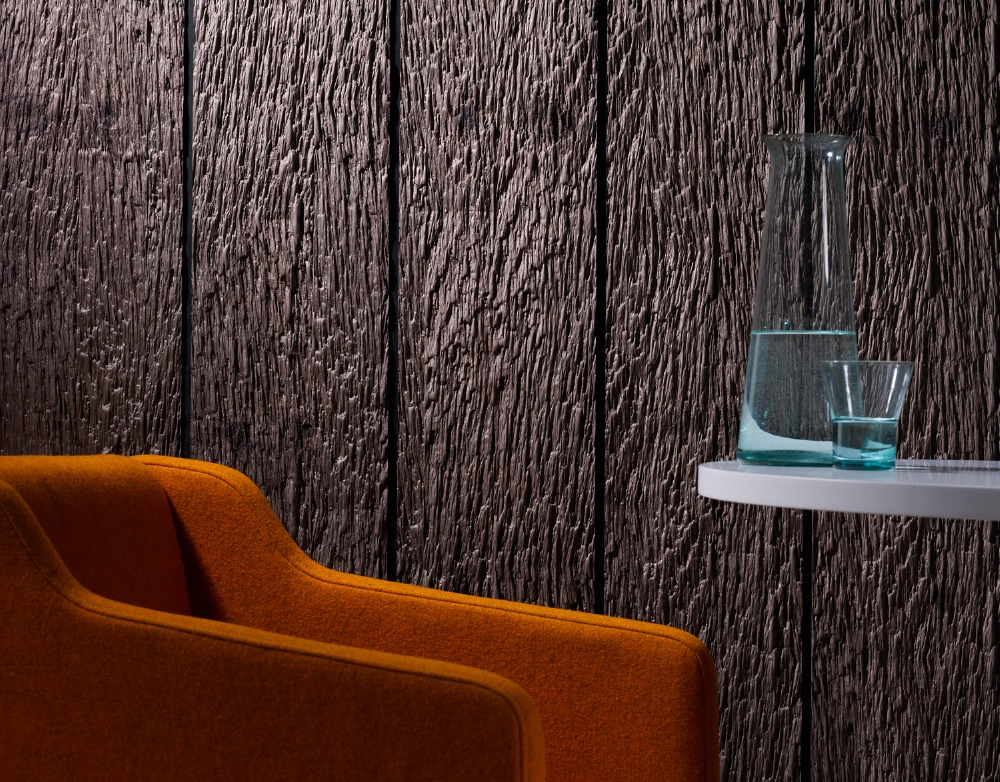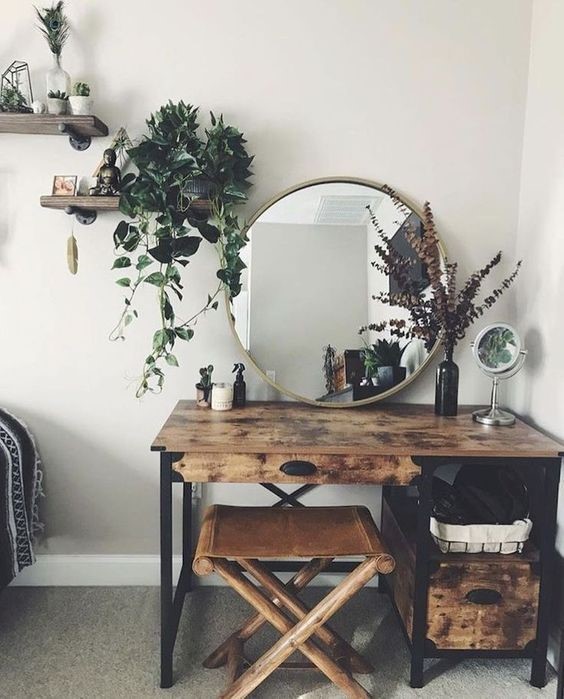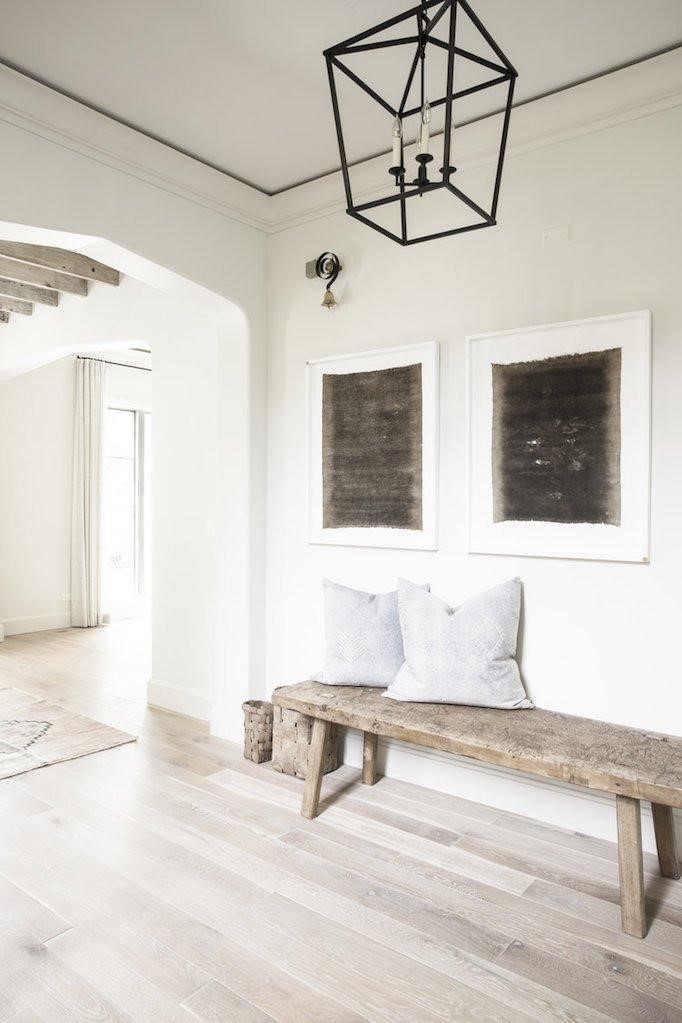It’s not every day that we get to have some sit-down time with our founder, Manish Maheshwari. So when we saw an opportunity for the same—we decided to make the most of it. After all, we wanted his observed inputs on a style that is ever-evolving and thus becoming a little elusive to define.
The said style is modern rustic interior and given our founder’s partiality for homestead-spirit-laced-with-urban-sophistication—we knew we were going to be plied with loads of valuable deets.
Here are the defining characteristics of the modern rustic interior style—
#1: FEATURE WALLS

Paneled wall is too rustic interiors as breath is to humans—it’s the quintessential feature of the aesthetic. Any time you see a project imagined in this style, you are bound to find at least one picture showcasing a warm surround of paneled walls. Since we are talking about rustic interiors sprinkled with modern flourishes so that they are palatable to the urban dweller—we advise floral wall plaques or an oversized art to boast the best of both worlds.
Manish says, “Paneled walls lend an air of warmth and intimacy in rustic settings. It’s an unmissable architectural detail of this aesthetic. The embossed veneer panel, 2487 – BORKE in grey wood, from Holz in Form with its deep sections springs to my mind when I think about an ideal candidate to work up a charming homestead-steeped rustic vibe.” Point noted.
#2: CHUNKY FURNITURE

Since the rustic style overall is characterized by visual heft—the furniture used is chunky with strong, masculine silhouettes. Manish notes, “Rustic style places a great deal of emphasis on tactile luxury—where pieces are disarmingly down-to-earth, sturdy, and shabby chic. Nothing feels precious but familiar and reliable with a touch of old-world mystique as some of the furniture pieces are restored to remind the users of the story they lived in their past life.”
That’s true while we are big fans of dainty, feminine furniture—it, however, doesn’t fit in the stolid vibe of rustic.
#3: TEXTURAL EMPHASIS

The draw of rustic interiors as our founder says, “lies in its close-to-the-nature homely charm”. Whether you decide to go with the ubiquitous and traditional choice—wood or the most sought-after and luxurious material—marble, this aesthetic calls for elements that look and feel texturally rich.
“The linear irregular grain of RMD panel WPM 060, brings with it an authentic rustic character. Equal parts discreet and distinct, this striking panel will be as much at home in industrial interiors as it will be in a modern farmhouse,” says Manish.
Likewise, for those of us who love to feel the knots of wood and find the tonal intricacies of the grain therapeutic, our Plankwud panel C 03 Dark Hazel will be right up your alley.
#4: WHITE WALLS

After paneled walls, if there’s another time-honored feature of the rustic style—it has to be white walls. Whether you choose to have an exposed brick wall bathed in this pristine hue or go for an all-white, cheerful background with just a few art pieces hung and a seating ensemble in the foreground—we’d say, you will have instantly nailed this aesthetic.
“The French, especially, those living in the picturesque Provence, will swear by the freshness and magic brewed by white walls. White walls also admit copious amounts of sunlight which not only works for space but also the soul,” says our founder.
We hope you enjoyed chatting with our founder, Manish, as much as we loved collating the inputs for you. To view our showcase, please visit Ventura Architectural Experience Centre TODAY in 1/120, W.H.S, Kirti Nagar, New Delhi. You can also log on to our website venturaindia.com to view our wide-ranging assortment of surface decors. For personal assistance, you can reach us on 91-11-45546700 and 1-800-103-6756 (toll-free).